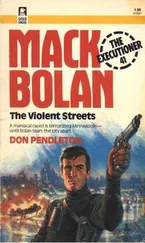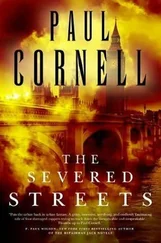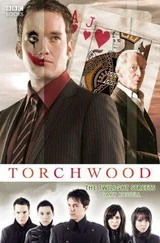But the interviews with two young men brought downtown by the first uniforms provide little. Apparently, neither one was the first to discover the body. One tells detectives that he learned about it from the other; the second says only that he had been walking on Baltimore Street when an old woman told him that there was a body in the alley. He had not gone to investigate, he tells Edgerton, but had simply told the second man, who flagged down a cop. Who was the old woman? The first young man has no idea.
As the case develops, Edgerton works deliberately and at his own pace. The initial canvass by Western officers was carefully done, but Edgerton spends days creating his own schematic diagram of the surrounding blocks, listing residents at each rowhouse and matching them with criminal histories and alibis. It is a rough little neighborhood, hard by the Western District’s lower boundary with the Southern, and the Vine Street drug market a block away brought all kinds of trash into the area, greatly adding to any list of potential suspects. This is the kind of investigation that brings out the best in Edgerton, playing as it does to his strengths: More than any other detective in the unit, he can work a neighborhood until every other pedestrian is feeding him information.
Part of it is his appearance-black, reedy thin, and well groomed, with salt-and-pepper hair and thick mustache, Edgerton is attractive in a decidedly laid-back way. At crime scenes, the neighborhood girls actually line up on the other side of the police tape and giggle. Detective Edge, they call him. Unlike most of his colleagues, Edgerton maintains his own string of informants, and more often than not they are eighteen-year-old yoettes whose boyfriends are out in the streets shooting one another for drugs and gold chains. Time and again, some corner boy would be on his way to the Hopkins ER with holes in his torso and Edgerton’s beeper would go off before the ambo could even arrive, the digital readout displaying the number of an east side pay phone.
Edgerton is at ease in the ghetto in a way that even the best white detectives are not. And more than most of the black investigators, too, Edgerton can somehow talk his way past the fact that he’s a cop. Only Edgerton would have bothered to clean the blood from a wounded girl’s hands in a University Hospital emergency room. Only Edgerton could share a smoke with a drug dealer in the back of a radio car on Hollins Street and emerge with a complete statement. In corner carryouts, in hospital waiting rooms, in rowhouse vestibules, Edgerton makes sudden and lasting connections with people who have no reason ever to trust a homicide detective. And now, in the case of Andrea Perry, a true victim, those connections come even easier.
The family and the neighborhood tell him that the child was last seen at eight the night before, walking her eighteen-year-old sister to the bus stop on West Baltimore Street. The sister says that as she boarded her bus, she saw Andrea walking north toward the 1800 block of Fayette and home. When the sister returned home at eleven and found that her mother was already asleep, she too went to bed. Not until the following morning did the family realize that the child had never arrived home. They filed their missing person’s report and held out some hope until that evening news broadcast from just a block away.
But days after the murder, the media coverage has all faded away. The Andrea Perry murder isn’t getting anything like a red-ball treatment from the city, and as the days wear on, Edgerton has to wonder about that. Perhaps it is because the victim was a year older, perhaps because her neighborhood was less stable and less central to the city than Reservoir Hill. For whatever reason, the newspapers and TV crews don’t stay with this one and, as a result, there is no deluge of calls and anonymous tips such as those that accompanied the death of Latonya Wallace.
In fact, the only anonymous call on the case came a few hours after the body’s discovery: a high-pitched male voice gave the name of a West Baltimore woman, claiming that he had seen her running out of the alley after hearing shots. Edgerton immediately decided the story was bullshit. This wasn’t a woman’s crime; the semen tells them that much. As with Latonya Wallace, this was a crime of one man, acting alone and for a motive that he could never share with other men, much less a woman.
Was this mystery woman then a witness? More bullshit, Edgerton reasoned. The killer chose the alley and the remains of that garage for an anonymous murder. He killed that little girl to prevent her from identifying him as a rapist, so why the hell would he fire that shot with anyone else in the alley? Edgerton was absolutely convinced that his suspect walked the little girl around those back alleys until he was sure they were alone. Only then did he pull the girl down against the brick wall. Only then did he bring out the gun.
Gary Dunnigan, who took the anonymous phone call, wrote out an office report and gave it to Edgerton for the file. Edgerton absorbed the information and checked the woman’s name on the computer to assure himself that she wasn’t a serious suspect. He even interviewed the woman’s neighbors and relatives, learning enough about her to satisfy his curiosity, but in the first week of the investigation he does not pick the woman up.
After all, the story makes no sense, and besides, he’s getting better information from his neighborhood canvass. One story has the little girl’s murder as an act of retaliation against one of her relatives, the other as a predatory act by a dealer who simply wanted to show the neighborhood how hard he could be. There is talk about two drug traffickers in the area, and neither man seems to have much of an alibi.
For once, and to the amusement of the other detectives, Edgerton arrives in the homicide office early each day, grabbing the keys to a Cavalier and then disappearing into West Baltimore. Most afternoons, Edgerton works through the shift change, not returning until well into the evening. Some days Nolan is with him, other days he works alone, his whereabouts a mystery to the rest of the squad. Alone on the street, Edgerton can be more effective than any man who ever had a partner. Out on the street, he understands the special benefits of isolation; his critics do not. There are detectives in the homicide unit who never go anywhere in the ghetto alone, who always double up on any investigative trip to West Baltimore.
“You want company?” detectives routinely ask each other. And on those rare occasions when one investigator sets out for the slums alone, he is invariably cautioned: “Careful, bunk, don’t get yourself captured.”
From the outside looking in, Edgerton understands that the camaraderie of the unit can be a crutch. More often than not, Edgerton ventures into the high-rise projects alone and finds witnesses; more often than not, other detectives march through neighborhoods in twos and threes and find nothing. Edgerton learned long ago that even the best and most cooperative witnesses are more likely to talk to one detective than to a pair. And three detectives working a case are nothing short of a police riot in the eyes of a reluctant or untrusting witness. In truth, when all is said and done, the surest way for a cop to solve a murder is to get his ass out on the street and find a witness.
The better detectives all understand this: Worden often does some of his best work alone in a Cavalier, riding back out to a neighborhood to talk quietly with people who recoiled when it was Worden and James and Brown camped on their doorstep. But there are detectives in the unit who are genuinely fearful of riding alone.
Edgerton has no such fears; he wears his attitude like a shield. Two months ago, he was out at Edmondson and Payson working a drug murder and, without thinking twice, he wandered away from his crime scene and down the worst stretch of Edmondson Avenue alone, parting a block of corner boys as if he were Charlton Heston on the Universal Studio lot. He was looking for witnesses or, at the very least, for someone willing to whisper into a cop’s ear some truth about what happened on Payson Street an hour earlier. Instead, he got surly looks and silent rage from fifty black faces.
Читать дальше












